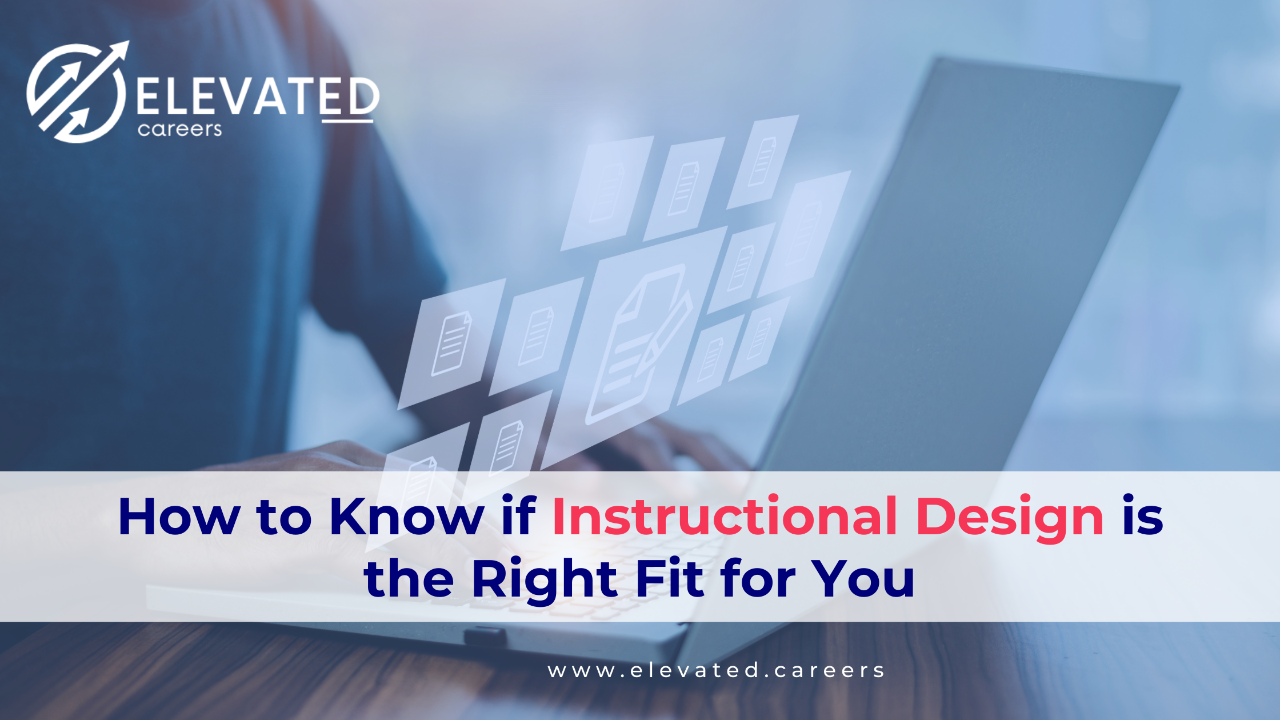How to Know if Instructional Design is the Right Fit for You
Mar 21, 2025
You’ve been eyeing instructional design for a while now.
Maybe you’ve taken a course or sat through a webinar.
Maybe you’re hearing the same buzzwords over and over — LMS, eLearning, Articulate, storyboarding — and wondering if this is your way out of the classroom.
But here’s the thing: just because instructional design is a common path out doesn’t mean it’s the right path for you.
Let’s cut through the noise and get clear on whether this field aligns with your strengths, interests, and lifestyle goals.
1. You Love Designing the Learning, Not Just Delivering It
Teaching and instructional design are related — but they’re not the same.
Ask yourself:
- Do you enjoy building curriculum more than delivering it?
- Have you ever lost track of time while creating a lesson, assessment, or digital resource?
- Do you get energized by planning out learning objectives, not just managing behavior or grading?
If you light up when you're behind the scenes, mapping out the learning journey, you’re already thinking like an instructional designer.
2. You’re Comfortable with Tech — and Willing to Learn More
Instructional design is tech-driven. You don’t need to be a coder, but you do need to:
- Navigate LMS platforms (like Moodle, Blackboard, or Canvas)
- Use authoring tools (like Articulate 360, Rise, or Captivate)
- Build clean, user-friendly slides, PDFs, or multimedia content
If you’re tech-averse or get overwhelmed by new tools, this may not be the best fit. But if you’re curious, adaptable, and eager to learn, you’re in good shape.
3. You’re Detail-Oriented and Think Systematically
Instructional designers obsess over:
- Sequencing information for clarity
- Aligning activities with objectives
- Testing learning for mastery
This isn’t off-the-cuff teaching. It’s structured, intentional, and often collaborative. If you’re the teacher who color-codes units, writes rubrics for fun, or builds Google Slide decks with surgical precision — this field plays to your strengths.
4. You’re Ready to Work Behind the Scenes
This shift often surprises teachers: instructional designers aren’t the face of the learning. You’re not “on stage” anymore.
Instead, you're:
- Creating resources for others to deliver
- Attending meetings, giving feedback, editing content
- Problem-solving for stakeholders, not students
If you crave direct interaction or that in-the-moment classroom energy, this change might feel isolating. But if you're ready to contribute in a quieter, more strategic way, this is a powerful pivot.
5. You Want a Role with Clear Boundaries and Better Balance
Many ex-teachers find relief in instructional design because:
- There’s no grading or classroom management
- You work with adults, not kids
- Hours are typically more consistent and remote-friendly
It’s not stress-free (no job is), but the type of stress is different. Fewer emotional demands. More project-based work. If you're craving that shift, instructional design can deliver.
⚠️ Signs Instructional Design Isn’t the Right Fit
Before you dive in, pause and check for red flags:
- You thrive on live interaction and real-time feedback. If you love the energy of the classroom and feel drained behind a screen, ID might feel flat.
- You resist structure and prefer creative freedom. Instructional design is often bound by brand guidelines, compliance rules, and client needs.
- You’re uncomfortable with software or slow to learn tech tools. The work is digital by nature — you’ll need to not only tolerate the tools but get good at them.
- You need frequent recognition or student-driven fulfillment. Your work will often be invisible to learners — and praise may be rare. You’ll need to find satisfaction in building strong learning experiences, not applause.
If any of this hits hard, listen to it. There are other roles out there that might better match your energy and strengths — roles where your teaching skills still translate.
Ready to Find Out for Real?
Exploring is free — and smart. Start by:
- Taking a short instructional design course
- Following IDs on LinkedIn and studying their projects
- Reworking one of your lesson plans into a sample eLearning module
You don’t have to guess. You can test.
And if instructional design clicks, it could be the career reset you've been waiting for.
Bottom line: If you’re strategic, creative, tech-curious, and ready to step out of the spotlight — instructional design isn’t just a good option. It’s a career with real legs.
Start learning the tools. Build a portfolio. And make the move.









